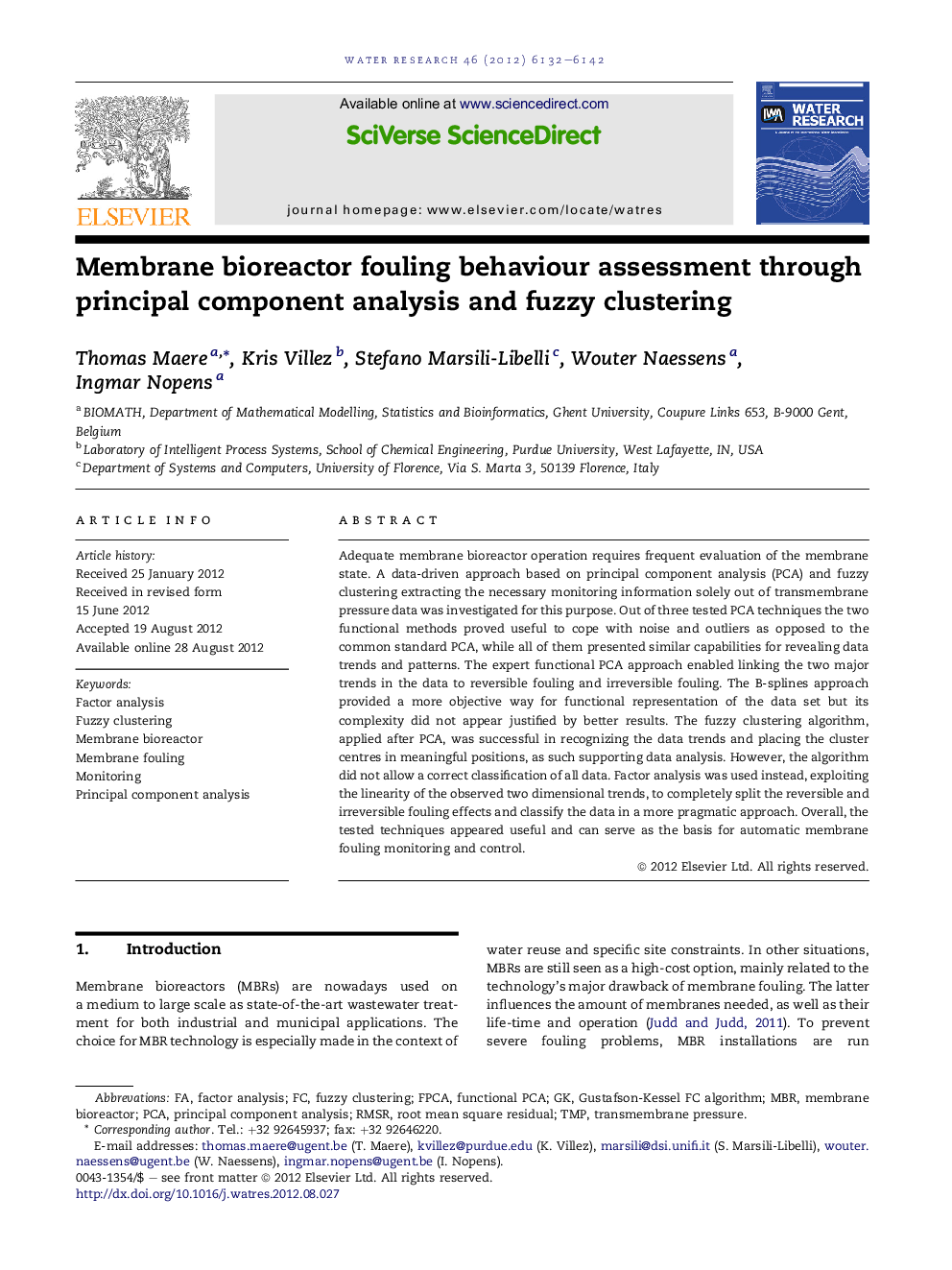| Article ID | Journal | Published Year | Pages | File Type |
|---|---|---|---|---|
| 4482057 | Water Research | 2012 | 11 Pages |
Adequate membrane bioreactor operation requires frequent evaluation of the membrane state. A data-driven approach based on principal component analysis (PCA) and fuzzy clustering extracting the necessary monitoring information solely out of transmembrane pressure data was investigated for this purpose. Out of three tested PCA techniques the two functional methods proved useful to cope with noise and outliers as opposed to the common standard PCA, while all of them presented similar capabilities for revealing data trends and patterns. The expert functional PCA approach enabled linking the two major trends in the data to reversible fouling and irreversible fouling. The B-splines approach provided a more objective way for functional representation of the data set but its complexity did not appear justified by better results. The fuzzy clustering algorithm, applied after PCA, was successful in recognizing the data trends and placing the cluster centres in meaningful positions, as such supporting data analysis. However, the algorithm did not allow a correct classification of all data. Factor analysis was used instead, exploiting the linearity of the observed two dimensional trends, to completely split the reversible and irreversible fouling effects and classify the data in a more pragmatic approach. Overall, the tested techniques appeared useful and can serve as the basis for automatic membrane fouling monitoring and control.
► The PCA–FC algorithm shows significant potential for membrane fouling control. ► PCA allows to efficiently extract vital monitoring info from common TMP data. ► Through expert functional PCA observed fouling trends can be clearly interpreted. ► PCA–FA may have an edge over PCA–FC in diagnosing differing faulty behaviours.
